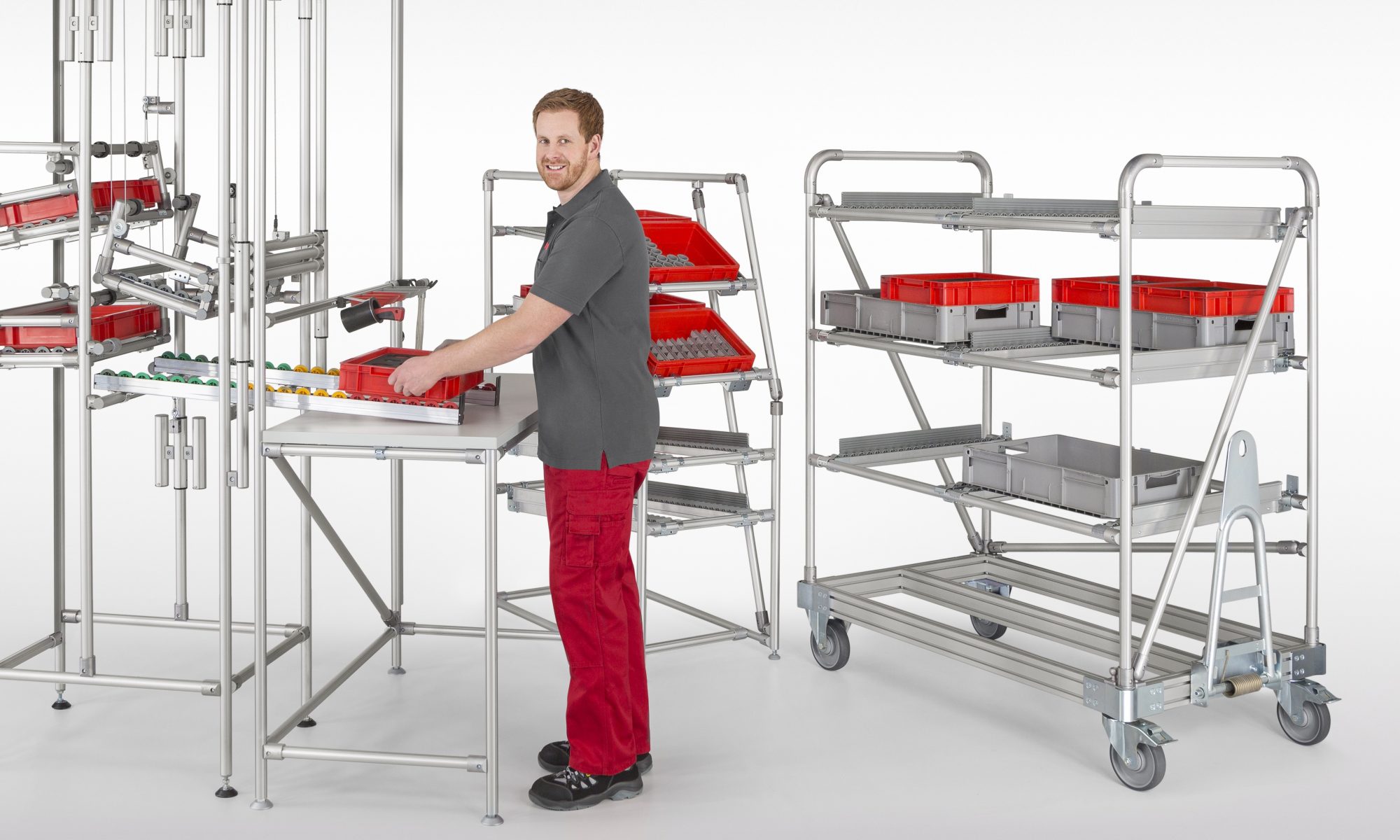The seven Muda show where waste is generated in production and how it can be eliminated by applying the continuous improvement process.
Boosting profitability with lean production
Lean production focuses on identifying and tackling the sources of waste in production. As the original concept was developed in Japan, the term “Muda” is often used. This Japanese term means an activity that is pointless and a lack of purpose or sense.
In this and the next two blog entries, we want to take a closer look at the seven classic types of waste. These are:
1. The movement of materials
2. Stock levels
3. Movement
4. Waiting times
5. Processing
6. Overproduction
7. Rectifications and errors
Recent research on lean production has resulted in two additions to the seven classic Muda identified by Toyota in the 1950s and 1960s – a lack of ergonomics and untapped employee talent.
Value-stream mapping – how to tackle waste in the movement of materials
Important resources are used every time a workpiece is moved from one place to another. However, instead of generating added value, time spent on transport simply increases costs by extending capital lockup and demanding more outlay in terms of energy and personnel. What’s more, each time something is moved, it is put at greater risk of being damaged or suffering quality impairments.
A lot of waste can be prevented by carefully planning the individual steps in a workflow, and that includes arranging the various locations where work is carried out so that they are closer together. At the same time, the individual processes themselves need to be coordinated with each other. The aim of value-stream mapping (VSM) is to optimise throughput times and to time the individual stages in a workflow as accurately as possible. This includes taking into account set-up times when different products are being made on the same machinery or at the same work benches.
Optimising the flow of materials with CIP
The continuous improvement process (CIP) is ideally suited to optimising material flows. Employees can offer valuable information on where waiting times are incurred and which transport routes are too long.
Companies can reduce the movement of materials and manage this movement in a more efficient way by using intelligent interlinking systems between workstations and customised transport solutions. Second-generation lean production building kit systems therefore offer a single system for intralogistics and factory equipment that ensures a smooth transition between work and movement. Using aluminium tubes with stable aluminium fasteners results in strong holding forces that are not impacted by dynamic loads and therefore have a positive impact on durability. Furthermore, stable constructions can be built with less material.
Using Kanban to reduce warehouse stocks
High stock levels are always a warning sign. The aim is to optimise production processes so that stocks of preliminary and intermediate products do not get too big. The Kanban principle is often used as a means of managing sequences. Kanban is a Japanese word meaning “signboard” or “billboard” and describes a simple method for ordering materials based on actual consumption. Included with every delivery, these order cards clarify the current flow of goods in line with the pull principle.
One of the typical applications of lean production building kit systems is the construction of Kanban carriages or trolleys that enable operators to quickly resupply workstations. Second-generation building kit systems also apply the rules of lean production to themselves. Experience has shown that the “one fastener for all” principle helps to keep warehousing requirements low. Instead of having to stock a whole range of specialist fasteners for various scenarios (connecting together 2, 3 or 4 tubes), companies can complete all their engineering tasks using just one standard product for 90° connections.





